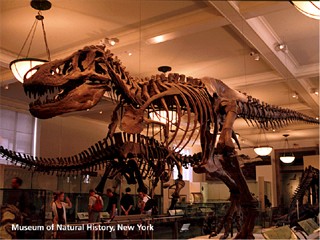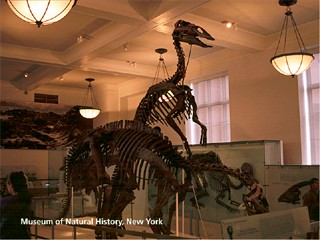 |
|
So, while we're wandering around New York, let us look at how such devices operate within the institution of the natural history museum. It seems to me that exhibits like the one below are more about what is not shown than what is. Museums of course are time capsules, that represent moments of frozen time, not only in terms of the physical objects of their collection, but also the thought processes, institutional authority and social context of nature at the time of exhibition construction.
|
  |
|
American artist, Mark Dion says that: "the natural history museum is one of the most essential sites for any investigation into how the dominant cultural group constructs and demonstrates its truth about nature. The museum is a container for a collection, while the appearance of the container may vary from museum to museum, each containers purpose is the same: to display and arrange nature for public education." [1] The museum is really two institutions, one for scientific research into evolutionary science (somewhat diminishing in this country) and the other a pedagogic exhibition hall about biology. What also demands a more rigorous examination is the effect of the psychological space within the museum, in relation to our popular perceptions of science and nature. One has to ask the question: did the pose above come from Jurassic Park or did Jurassic Park come from this pose? Computer effects animators who worked on Jurassic Park visited the natural history museum as a source of inspiration and as background research for developing the computer generated dinosaurs for the film. |
